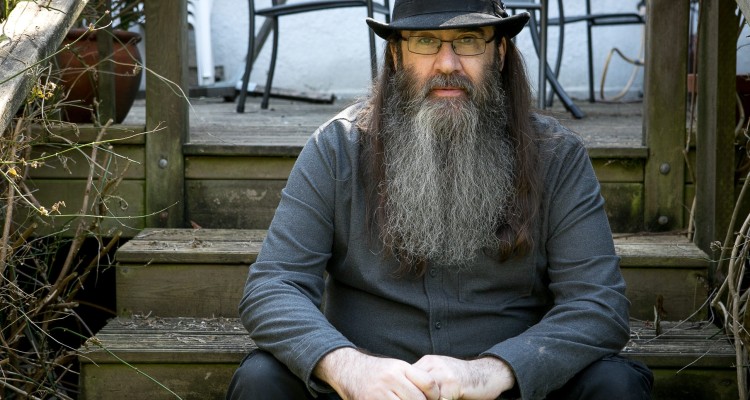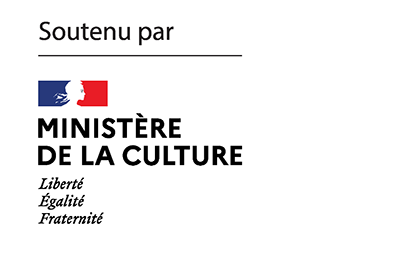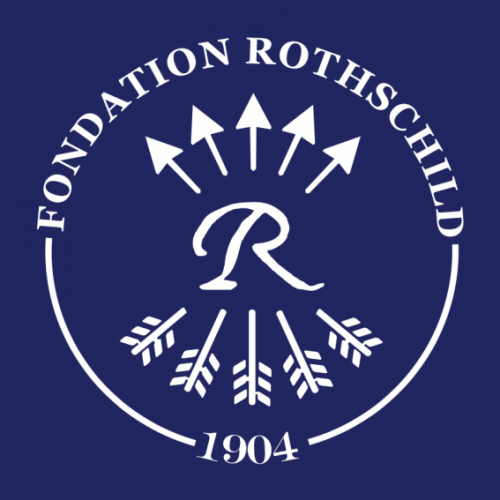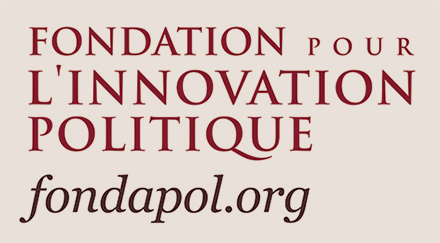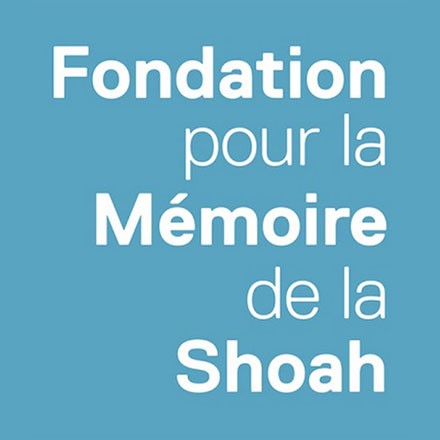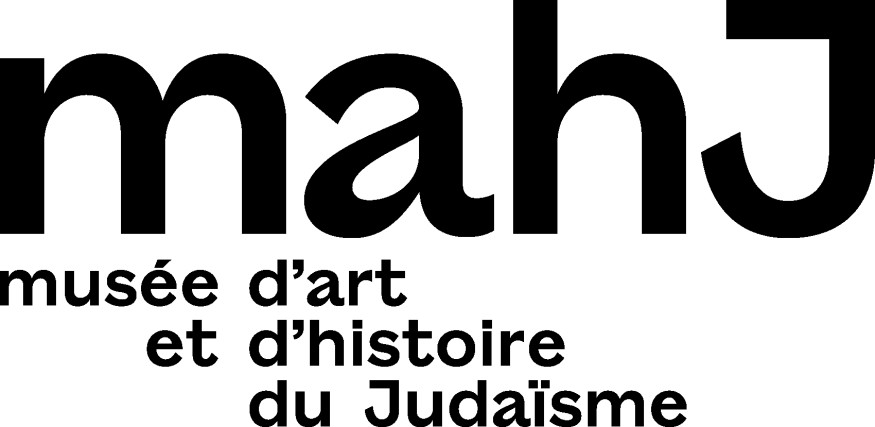Vladimir Jankélévitch was born 120 years ago, in 1903. The first biography of the French philosopher, and Resistance fighter who went underground in 1941, was published this year[1]. Avishag Zafrani examines a number of aspects of his relationship with Jewish consciousness after the Shoah, based on an interpretation of Jewish time as distinct from tragic time.
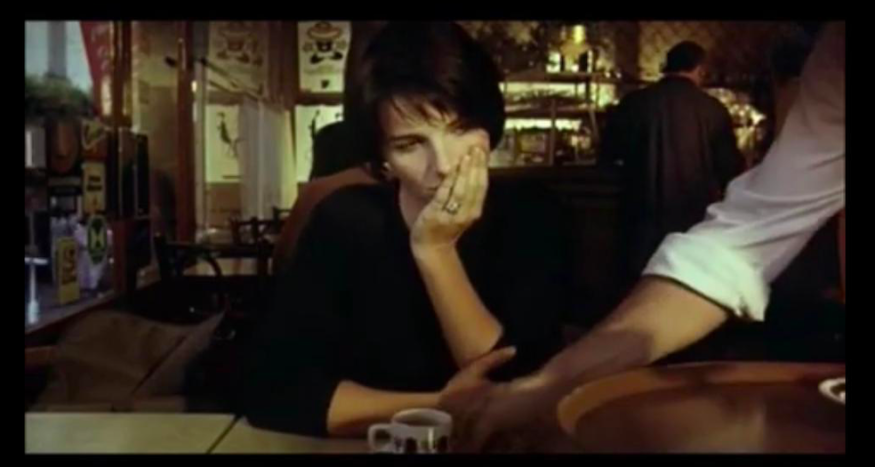
In Kieslowski’s film Bleu, there’s a scene in which Juliette Binoche, seated in a Parisian café, takes the time to melt her sugar in her hot coffee, slowly, both present and absent as she performs this anodyne gesture. And yet, the in-between moment of dissolving the sugar in the coffee illustrates a transition and undoubtedly the metamorphosis of a person who must learn to live alone, stricken by a tragedy whose pain is unspeakable. In a lecture, Kieslowski explained the content of his frames, measuring the time needed for the sugar to melt, with the shots intended to signify that the world becomes Juliette’s own, that it becomes simultaneously unified and singularized around an interiority rendered visible in the scene.
Dynamic duration, lived drama and its overcoming, are some of the terms by which Jankélévitch approaches the time of the Jewish condition and consciousness, oscillating between the futurition of the prophets and the messianic expectation. In so doing, he is not only trying to determine the contours of Jewish consciousness, particularly after the Holocaust, but also to criticize the pseudo-tragic philosophers, and probably the one whose name he no longer wishes to mention: Heidegger.
Another important fact: the clearest sentences in this respect are to be found in one of the chapters added after the war to his Henri Bergson, originally published in 1931. The said chapter is in fact an appendix entitled Bergson et le judaïsme [Bergson and Judaism]. Indeed, we will have recognized in the expression “dynamic duration” a Bergsonian temporal motif. With this introductory remark, Jankélévitch places Bergson once again on the side of Judaism—although he knows that the latter wouldn’t have liked such a placement. But he’s also saying something about his own philosophical and moral positioning, distinct from contemporary philosophers of despair and dereliction, who undoubtedly display a romantic-pessimistic complacency for anguish, “even though they haven’t lived through the tragedies that we lived through.”[2] This extraordinary sentence, which contains not only an accusation of complacency but also of usurpation of the tragic posture, is to be found in the chapter “Bergson and Judaism,” in which Jewish and Bergsonian times[3] are brought together. “Just as,” writes Jankélévitch, “Bergson must wait for the sugar to melt in his glass (because no one can compress the time of fusion, nor in general the duration of changes of state, and physical time is as incompressible as the biological time of a fever), so Israel must await for the coming of its Messiah.”
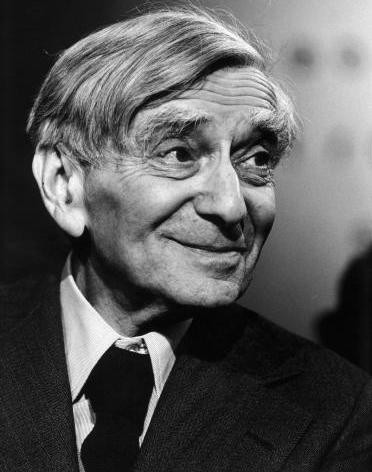
In the end, Bergson would not have converted to Christianity, even though the conclusions of Deux sources de la morale et de la religion [translated into English under the title The Two Sources Of Morality And Religion] seemed to indicate the contrary, through his obvious interest in Christian mystics, but also because of the small place devoted in his work to Judaism as a result of a profound unfamiliarity—according to Noé Gottlieb as quoted by Jankélévitch in his text. What are the reasons for this non-conversion assuming it was really contemplated by Bergson?[4]Was it a question of not dissociating himself from his co-religionists in a time of persecution? The reason has been put forward, but it doesn’t seem sufficient to Jankélévitch. In the Cahiers de l’Herne recently devoted to him, we find these lines extracted from an interview dating from 1967: “In fact, a non-conversion for exclusive reasons of circumstances in order not to leave one’s co-religionists would seem to me to be an insult to the religion of [Bergson’s] fathers, Judaism. Actually, there were philosophical reasons for his non-conversion. In fact, he could have converted after his book Les deux sources de la morale et de la religion [translated into English under the title “The Two Sources of Morality and Religion”] written between 1925 and 1930. There was no circumstantial reason to stop him. If he didn’t, it’s because he couldn’t find complete philosophical satisfaction in religion. He only had a philosophy of charity. Bergson, through the detour of a philosophy of duration, was perhaps still patiently awaiting his messiah. And Jankélévitch adds: “Yes, Bergson revealed Jewish traits: this optimism, this refusal of the problem of death, his search for the fullness of life, the influence of the prophets. But he wouldn’t have liked it to be said. Precisely because of his flirtation with the Catholic Church, which earned him the enmity of Jews like Edmond Fleg, who saw in him the future convert. This attachment to his family led him to decide to stay with them in Paris at the start of the Occupation. This is how he caught a cold in early 1941, died, and had a really “hasty” funeral. Jankélévitch undoubtedly added the appendix “Bergson and Judaism” after the war, not only to avoid offending the deceased but also because Bergson’s “Jewish traits” were to appear even more clearly to him in his personal but “instinctive metaphysical” opposition to the pseudo-tragic philosophers, whereas all of Bergson’s philosophy is distinguished from a “pathos” of death.

Another philosopher on the bangs of Judaism who breaks with any possibility of a pathos of death is Spinoza, whose name appears several times in this chapter and throughout the book. Let’s mention a further illustration of the contradiction: after reading the first edition of the book that Jankélévitch wrote about his thought, Bergson congratulated him on having understood it so well, and emphasized the importance of mobilizing Spinoza whose thinking he was familiar with, even though their respective theses were antagonistic. Feeling at ease with a Jewish author whose interest in Christ—in the Theologico-Political Treastise and a Political Treastise, for example—is said to denote a valorization of Christianity and a desire for conversion but who did not convert, is a pas-de-deux that perhaps leads to the same place. So what is this place located “at the crossroads”? Is it an ultimately utopian non-place, explaining the impossible and pointless conversion, despite excommunication, despite assimilation?
Whatever these speculations, the muted reflection, in the silence of Heidegger’s name, concerns not only the possibility of a “nihilization” of death, but also the affirmation of a transcendence of duration, which would found a concrete moral philosophy of freedom, as well as an ethic of joy. The nihilization of death must be understood in the following way: not to deny death, of course, whose awareness is a spur to existence, but to decide on the primacy of perseverance in being. What’s more, because all this may seem abstract, we need to link anguish and despair to a real context, and not to an ontological positioning separate from the dramas that engender these “psychological” consequences. Is it being-in-the-world that generates anguish that is consubstantial with existence? We have shown elsewhere that this positioning points to a preference for a Gnostic-style sense of alienation (and that there is a metaphysical anti-Semitism to Gnosis). When Jankélévitch refers to the pseudo-tragic philosophers, he indicates the absence of any real tragic context for these thinkers. Likewise, he argues that to claim the title of engaged philosopher, one must have run a danger, beyond the danger of living in oneself. What are the proximate causes of danger, of death? Undoubtedly, for example, the fact of resisting or being persecuted, as Jankélévitch seems to say. Paradoxically, the engaged are those—like the lieutenant and philosopher Jean Cavaillès—who have not built a philosophy upon their proximity to death. He adds an element that shows the corrupted use of anguish as a philosophical driving force, insofar as a moral philosophy is expected to meet the burden of overcoming anguish.
Note that philosophy, according to Jankélévitch, is moral in nature, insofar as it must enable the conditions of judgment, in other words, the practical application of thought. Therefore, the philosopher cannot remain in his “ivory tower” (Jankélévitch used the formula: “there is no tower and it is not made of ivory” seeming to respond to Hannah Arendt’s consideration of Heidegger’s position during and after the war, namely that of a thinker confined successively to an ivory tower and a foxhole. However, moral philosophy is not ostentatious, for otherwise it would fall into the throes of a philosophy of commitment criticized by Jankélévitch. It does not claim its own virtue, nor does it have the ambition to say, or to recover, the totality of the forgotten or lost Being. It is carried out from the angle of the I-do-not-know-what [le je-ne-sais-quoi] and the Next-to-nothing [le presque-rien], i.e., the two concepts of Jankélévitch’s dialectical rather than systematic thinking. It’s worth noting how subtly, in its literal sense, Jankélévitch’s thought is exercised under the surface, in a non-ostentatious way, evoking the various meanings of words and statements, their literary dimensions, their musical echoes, and all that can be said about them in reverse, at a steady pace—as if he’d found the secret of perpetual thought, thereby demonstrating that there is no definitive thesis. Hence the difficulty of finding a line of thought that can guide right action, in other words, a moral life. The latter arises precisely from a free will, between circumstances and constraints, as an indeterminate “surplus,” as a philosophy of the je-ne-sais-quoi et du presque-rien [I-do-not-know-what and The next-to-nothing] suggests. So even if we can’t say any more on the subject, it should be noted that the possibility of the indeterminate is opposed to alienation as the first and last diagnosis of life, i.e., to theories in which life is already exhausted from existing. Among Bergson’s Jewish traits, Jankélévitch also circumscribes this space for “novation” in the incompleteness of biblical creation, as well as in the prophets’ futurition, so that “levitation prevails over gravitation.”
We know that Jankélévitch, a Schelling scholar as well as a musician and musicologist, renounced German philosophy and German music after the war. What had been the expression of a nocturnal, romantic, mysterious, idealistic way of thinking before the war, became the origin of a way of thinking that was confused, distracted, even contemptuous of reason, but above all turned against it. In his search for a concrete philosophy, he found in Russian literature, and in Tolstoy in particular, the hallmarks of Bergsonian plenitude and beatitude. But, crucially, Tolstoy’s stories inspired him not only to think of the “nihilization” of death, but also of the “lived drama.” Let’s briefly revisit these distinctions, as they should enable us to understand the differences between the tragic and the lived drama, and hence once again the “pseudo-tragic.”
According to Jankélévitch, Léon Chestov is a philosopher of tragedy, but also, like Tolstoy, a philosopher of lived drama. Chestov’s Philosophy of Tragedy provides valuable insights into this subject, based on the lives and writings of Dostoevsky and Nietzsche. The paths taken by these two figures lead to the end of ideals and illusions (and to a kind of conversion or transmutation of values in the case of the latter). However, to reach the point of “shattering idols,” whether the latter being Bielinski or Wagner, a profound inner experience is required, i.e., the denial of a past that provokes a new reading of reality. This fall already produces the framework for a tragic perception of the world, a drastic questioning of revolutionary or other beliefs. It also produces a psychological sense, approaching the knowledge of man through his visceral motives, his impulsive, amoral subterranean life, which then becomes the privileged literary material of a cruel realism. But there is no “taste” for tragedy. Chestov writes “…those who express tragic moments fear real tragedies, the tragedies of existence, just as much as other men (…) Dostoevsky had no taste for tragedy, and avoided the tragic as much as possible in his own existence (…). He strove to forget the penal colony, but the penal colony did not forget him.”[5]. For Chestov, the tragic renews the dualism of flesh and spirit, at a time when idealism postulates that reason can dominate nature. He expresses this tension and a struggle, which borders on madness, and also seeks redemption.

Tolstoy, to whom Chestov also devotes some of his writings (notably in the texts of In Job’s balances), while not renouncing idealism, is also dominated by the question of sin. In Jankélévitch’s writings, however, he becomes the writer of “lived drama,” an expression similar to the one the French philosopher uses to criticize pseudo-tragics, and to refer to his own dramas, as well as those of the Jews and members of the Resistance. Although Jankélévitch himself, like Bergson, is not a tragic philosopher, he did work on the question of death, particularly from 1940 onwards, when he took refuge in Toulouse with students, some of whom joined the French Resistance. He was particularly struck by Tolstoi’s descriptions of agony, the realism of which was confirmed by his own father, Samuel Jankélévitch, who was a physician. The latter, born in Odessa, became a doctor in Montpellier and was Freud’s first translator in France. He wrote an unfinished book on death in Tolstoy and pointed out to his son how accurate the descriptions of the dying were in the accounts of the Russian writer. So, here, the lived drama means a sensitive knowledge of reality, but also, in the Tolstoyan perspective, the tragic desire to access the mystery of death, and a glimpse of immortality deduced from a form of universal pantheism. The tragic is expressed in this desire to “nihilize” death[6]while it is known and described in a concrete way by a conjuration of death or anguish.
On reading Jankélévitch’s texts on death, lived drama and the tragic, are we simply supposed to deduce that this pseudo-tragedy suffers from excessive abstraction and that the author doesn’t know what he’s talking about? So much so that, when it comes to evoking death in the form of murder by extermination, he will use the unconcerned expression “the manufacture of corpses”? Perhaps. The subject would obviously have to be redirected to unnatural death, but the recurrence of these elements and their ability to inform the perception of the tragedy cannot fail to raise curiosity.
The Judaic morphology that remains in Bergson’s thought, as glimpsed by Jankélévitch, shows for its part that the center of reflection has shifted; nothingness no longer appears worthy of interest, rather it is a reason for the “gentrification” of thought and cannot, in any case, engender a philosophy. “In the Bible, as in Bergson, man’s relationship to time is an affirmative one.”[7] Intensive duration articulates this affirmation and the ongoing process of time, a form of universal mobilism rather than pantheism.
Avishag Zafrani
Translated from French by Bernard Dov Belz
Notes
| 1 | Vladimir Jankélévitch, Le charme irrésistible du je-ne-sais-quoi, by Françoise Schwab (Albin Michel, 2023) |
| 2 | Vladimir Jankélévitch, Henri Bergson, Duke University Press (2015) |
| 3 | Vladimir Jankélévitch, Bergson and Judaism, in Alexandre Lefebvre & Melanie Allison White (eds.), Bergson, Politics, and Religion, Duke University Press (2012) |
| 4 | Opinions differ. However, in Philippe Soulez’s book Bergson politique, Bergson is said not to have been baptized. The last lines of the chapter “Conclusion – De l’action à l’acte, le testament de Bergson. Bergson face au nazisme” [From action to deeds: Bergson’s testament to Nazism], Soulez goes on to say that Bergson took other significant steps. The Encyclopedia Judaica indicates that Bergson registered as a Jew despite the dispensation that Vichy wanted to give him. M. Neuburger’s testimony and a letter from J. Chevalier that we have been able to read lead us to believe that this was indeed the case. The Encyclopedia Judaica adds that Bergson resigned from all his “honorary functions.” (Philippe Soulez, Bergson Politique.) Nevertheless, the question of non-conversion cannot be analyzed in isolation from a sentence. Bergson wrote about the Jews, attributing to them a responsibility for the rise of anti-Semitism, since some had committed themselves to Bolshevism. So what did Jankélévitch do when he returned to this subject after the war? He certainly projected a Bergson who had lived through the war and learned of the fate reserved for his co-religionists including extermination. Would this fictional Bergson have maintained this attribution of responsibility for anti-Semitism to a few Jews whose ideological commitments he didn’t like? Jankélévitch assumes and hopes that the answer is “no.” |
| 5 | Lev Shestov, Dostoevsky, Tolstoy, and Nietzsche (The Good in the Teaching of Tolstoy and Nietzsche: Philosophy and Teaching & Dostoevsky and Nietzsche: The Philosophy of Tragedy |
| 6 | See in particular the article “Tolstoï et la mort” [Tolstoy and Death], and the interview “L’insupportable mystère de la mort” [The Unbearable Mystery of Death], in Jankélévitch, op. cit. |
| 7 | Vladimir Jankélévitch, Henri Bergson, op. cit. |

